OSHA’s Oopsies
Safety Lessons from the Land of Common Sense
IHH Staff
11/10/20254 min read


Ah, OSHA. The government’s favorite hall monitor for grown-ups who still think ladders are optional and safety glasses are “just a suggestion.”
We love OSHA —kind of, but not really. They make the rules that keep you from setting yourself (and your coworkers) on fire. But every year when OSHA drops their “top safety priorities,” it feels less like new information and more like a sequel to a bad movie nobody asked for: “Workplace Safety: The Things We Should Already Know.”
So, because we care (and because sarcasm helps learning stick), we’re breaking down OSHA’s 2025 focus areas — Health Industry Services style.
Buckle up. You’re about to learn, laugh, and probably feel personally attacked.
💺 1. Workplace Ergonomics in a Hybrid World
Ah yes, the “Work From Home” setup — otherwise known as “the ergonomic disaster zone formerly known as your kitchen table.”
Some of us are still balancing laptops on cereal boxes, pretending we’re “fine.” Spoiler: you’re not.
OSHA says: Keep monitors at eye level, wrists straight, and feet flat.
Translation: Stop typing from the couch like a gremlin.
👉 Pro Tips:
If your boss won’t buy you a proper chair, tell them back surgery costs about $100K more, and that’s just the anesthesia!
Stretch breaks aren’t optional — they’re survival.
Ergonomic audits aren’t just for offices anymore. Ask for one.
📊 Stat Check: Musculoskeletal disorders make up 30% of workplace injuries. Most could be prevented with a better chair and a slightly higher laptop stand.
🦾 2. Safe Lifting Techniques & Material Handling
Let’s play a little game called “Lift With Your Legs, Not Your Regrets.”
It’s been OSHA’s mantra since the Stone Age, yet back injuries are still the #1 reason people miss work. Whether it’s boxes, patients, or “just this one heavy thing,” your spine doesn’t care.
👉 Pro Tips:
When in doubt, get help. (Yes, even you, Mr. “I Got This.”)
Smart lifting tech — like exoskeletons — is here and actually affordable.
Wearable devices can now tattletale on your posture. Embrace the shame.
📊 Reality Check: Back injuries = 1 in 5 workplace injuries. In healthcare? They’re practically an epidemic.
💢 3. Workplace Violence Prevention
Nothing says “team bonding” like making sure nobody gets punched during a shift.
Workplace violence isn’t just physical — it’s also the verbal abuse, the threats, the yelling customers, and the “Karen in crisis” situations.
👉 Pro Tips:
Have a real reporting system. If people are scared to use it, it doesn’t work.
De-escalation training saves jobs (and faces).
Create a zero-tolerance culture for bullying, period.
📊 Safety Truth: 75% of workplace assaults happen in healthcare. OSHA’s not being dramatic — it’s a real issue.
🔥 4. Fire Safety & Emergency Readiness
Ah, the annual fire drill — where half the staff goes to Starbucks “just in case.”
Fire safety isn’t optional, folks. OSHA says every workplace should have working extinguishers, alarms, and evacuation plans. If your drill ends in chaos, you’ve got work to do.
👉 Pro Tips:
Know two exits, not just the one near your snacks.
Assign evacuation roles — someone’s gotta be in charge of the cat from accounting.
Fire safety is part of a bigger plan: disaster preparedness.
📊 Stat Snapshot: Workplace fires cause 3,300 injuries and $1.3 billion in damages each year. That’s a lot of “oopsies.”
🧘 5. Employee Health & Wellbeing Resources
If you’re burned out, anxious, or tired enough to cry over printer paper — you’re not “fine.”
OSHA’s new wave of safety thinking — Total Worker Health — says your mental and emotional well-being is part of workplace safety.
👉 Pro Tips:
Take actual lunch breaks. “Desk dining” doesn’t count.
Encourage stress management and fatigue awareness training.
Leaders: check on your people before they check out.
📊 Real Talk: Stress-related absenteeism costs U.S. businesses over $300 billion a year. You can’t out-hustle burnout.
🪜 6. Fall Protection & Ladder Safety
We’ll never understand why people keep fighting gravity — it always wins.
Year after year, fall protection is OSHA’s #1 most-cited violation. Translation: people are still using chairs as ladders.
👉 Pro Tips:
Maintain three points of contact (and no, coffee doesn’t count).
Inspect your ladder — wobbly = unsafe = bad day.
If you “just need to reach,” don’t. That’s how legends (and ER visits) are made.
📊 Stat Check: Falls make up 35% of all construction deaths, but they also happen in warehouses, hospitals, and offices. No one’s immune.
☣️ 7. Environmental & Chemical Safety
Chemicals and climate — both out to get you.
Sure, we’ve got our usual suspects (cleaning agents, solvents, mystery liquids in unmarked bottles), but now we’ve also got wildfire smoke, extreme heat, and poor air quality joining the party.
👉 Pro Tips:
Label everything. “That stuff in the blue bottle” isn’t a label.
PPE isn’t optional — especially when mixing or cleaning. Can you smell a future blog topic coming on?! We Can!
Prepare for environmental changes — heat, storms, smoke — before they hit.
📊 Stat Check: Hazard communication violations are always in OSHA’s top five. And climate-driven risks are only climbing.
💬 Safety Truth Bomb: It’s Not Paperwork — It’s People.
OSHA writes the rules, but you build the culture.
Safety isn’t a form you sign once a year — it’s how you show your team you care.
As we roll into 2026, let’s do better than “Oopsies.”
Let’s build safer, smarter, sassier, and stronger workplaces — the kind where everyone goes home intact and maybe even smiling.
Stay safe, stay smart, and remember: common sense is not so common!
✍️ Written by Health Industry Services
Training humans to stay alive, one sarcastic safety lesson at a time.


